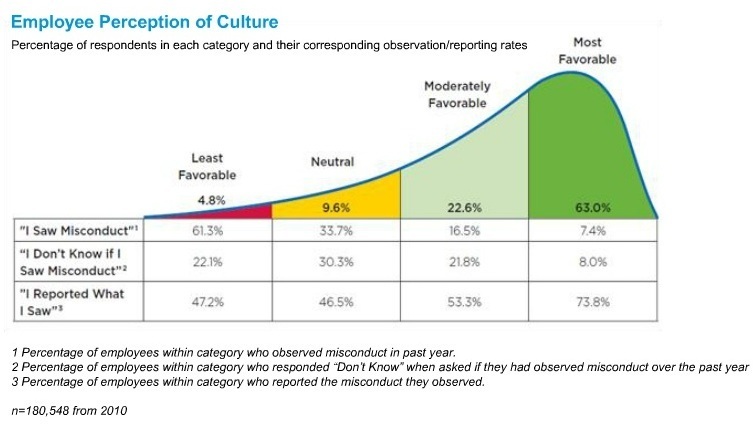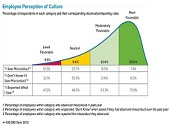A panel of four specialists convened to discuss various aspects of ethics and risk management in a GARP-sponsored webinar on June 21, 2012. Part I of this blog posting summarizes comments by Peter Went and Hans Helbekkmo.
The third speaker was Dan Currell, Executive Director, Corporate Executive Board (CEB). He presented empirical findings from the CEB on-line survey that asked essentially two questions: “Have you seen misconduct? And if so, what was it?”
I have mixed feelings when I listen to survey results. I listen as someone who craves a snapshot of current opinion; I also listen as someone who has knowingly given incomplete or ambiguous replies. I have never taken the CEB survey, but I can imagine busy people would be inclined to under-report because it would take too long to get into the messy details. Or, a respondent might be unclear about what constitutes misconduct. My point is that there must be significant error bars for these results. I was amazed when Dan Currell said three-quarters of a million people had been surveyed. [So that’s why my calls go unanswered; everyone else is busy filling out surveys.]
 Currell promised to deconstruct the components of integrity. The Risk Clarity Survey identified seven key attributes of a culture of integrity: comfort speaking up; trust in colleagues; direct manager leadership; tone at the top; clarity of expectations; openness of communication; and organizational justice. “Of these,” said Currell, “the two most important attributes are comfort speaking up and organizational justice.” It all boils down to “the employee’s belief that the company will do something.”
Currell promised to deconstruct the components of integrity. The Risk Clarity Survey identified seven key attributes of a culture of integrity: comfort speaking up; trust in colleagues; direct manager leadership; tone at the top; clarity of expectations; openness of communication; and organizational justice. “Of these,” said Currell, “the two most important attributes are comfort speaking up and organizational justice.” It all boils down to “the employee’s belief that the company will do something.”
Currell showed a graphic that summarizes how improving the employee perception of the company culture reduces misconduct.
In order to properly address employees’ reports or concerns about misconduct, the managers themselves need triaining in ethics and compliance, Currell reminded the audience. Half of all observed misconduct goes unreported, he said, with the top reason for not reporting being “fear of retaliation.”
Is this a surprise to anyone? It makes sense, in terms of safety and survival, to choose a path of not reporting. What is remarkable, what is noteworthy, in my opinion, is the fact that so many instances are reported. ª
The webinar presentation slides can be found at: http://www.garp.org/risk-news-and-resources/webcasts/on-demand-webcasts.aspx?page=1
Be sure to check out the CEB site for other interesting research papers.

